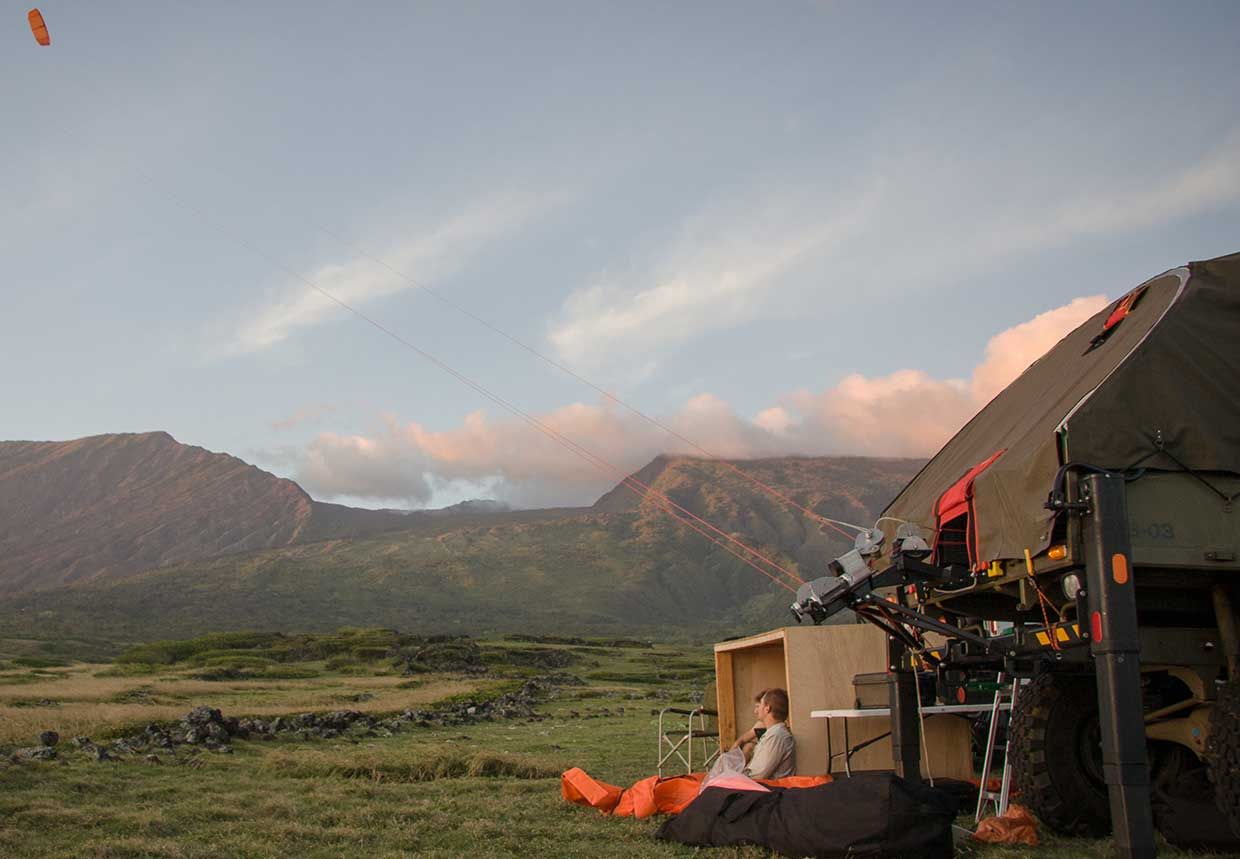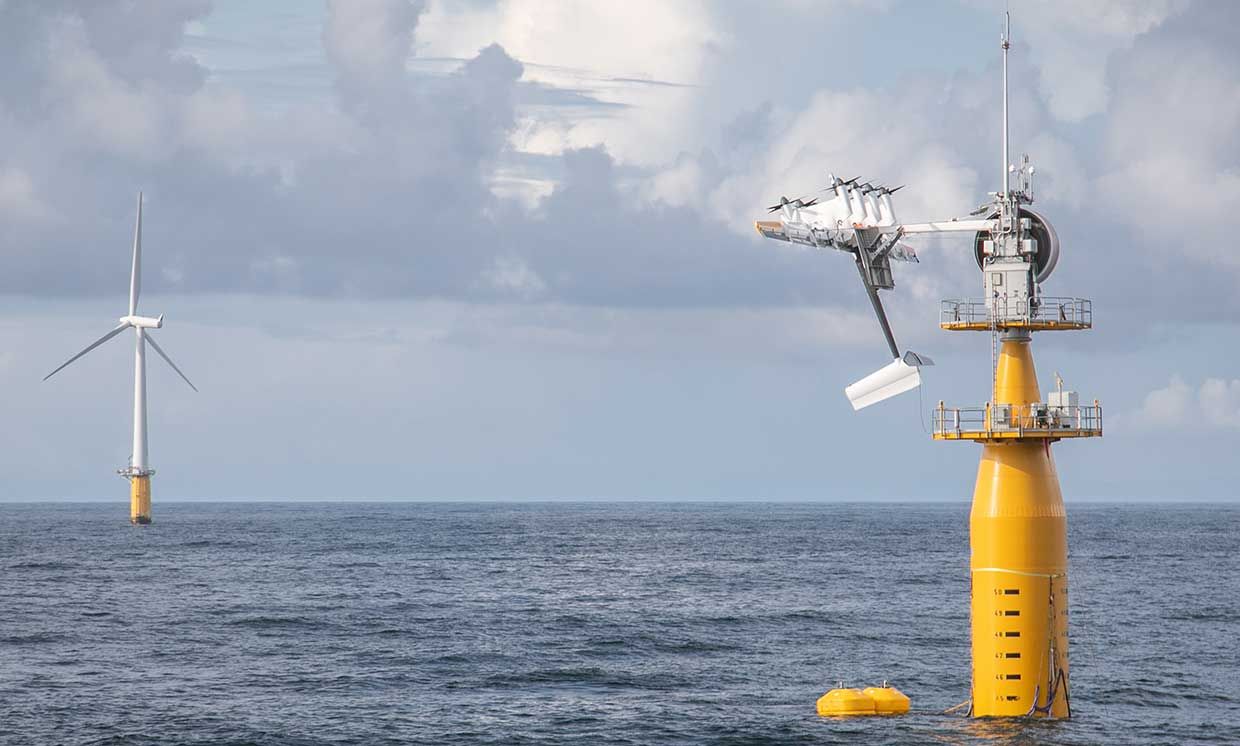Exclusive: Airborne Wind Energy Company Closes Shop, Opens Patents
This week, a 13-year experiment in harnessing wind power using kites and modified gliders finally closes down for good. But the technology behind it is open-sourced and is being passed on to others in the field.
As of 10 September, the airborne wind energy (AWE) company Makani Technologies has officially announced its closure. A key investor, the energy company Shell, also released a statement to the press indicating that given the current economic environment" it would not be developing any of Makani's intellectual property either. Meanwhile, Makani's parent company, X, Alphabet's moonshot factory, has made a non-assertion pledge on Makani's patent portfolio. That means anyone who wants to use Makani patents, designs, software, and research results can do so without fear of legal reprisal.
Makani's story, recounted last year on this site, is now the subject of a 110-minute documentary called Pulling Power from the Sky-also free to view.
When she was emerging from graduate studies at MIT in 2009, Paula Echeverri (once Makani's chief engineer) said the company was a compelling team to join, especially for a former aerospace engineering student.
Energy kite design is not quite aircraft design and not quite wind turbine design," she said.
The initial idea behind the company's technology was to raise the altitude of the wind energy harvesting to hundreds of meters in the sky-where the winds are typically both stronger and more steady. Makani was looking into kites or gliders that could ascend to altitude first-fastened to the ground by a tether. Only then would the flyer begin harvesting energy from wind gusts.
 Photo: Andrea Dunlap/Makani Technologies Makani's early soft kite prototype completes a 24-hour flight in Maui, Hawai'i, in 2008.
Photo: Andrea Dunlap/Makani Technologies Makani's early soft kite prototype completes a 24-hour flight in Maui, Hawai'i, in 2008. Pulling Power recounts Makani's story from its very earliest days, circa 2006, when kites like the ones kite surfers use were the wind energy harvester of choice. However, using kites also means drawing power out of the tug on the kite's tether. Which, as revealed by the company's early experiments, couldn't compete with propellers on a glider plane.
What became the Makani basic flyer, the M600 Energy Kite, looked like an oversized hobbyist's glider but with a bank of propellers across the wing. These props would first be used to loft the glider to its energy-harvesting altitude. Then the engine would shut off and the glider would ride the air currents-using the props as mini wind turbines.
According to a free 1,180-page ebook (Part 1, Part 2, Part 3) The Energy Kite, which Makani is also releasing online, the company soon found a potentially profitable niche in operating offshore.
Just in terms of tonnage, AWE had a big advantage over traditional offshore wind farms. Wind turbines (in shallow water) fixed to the seabed might require 200 to 400 tons of metal for every megawatt of power the turbine generated. And floating deep-water turbines, anchored to seabed by cables, typically involve 800 tons or more per megawatt. Meanwhile, a Makani AWE platform-which can be anchored in even deeper water-weighed only 70 tons per rated megawatt of generating capacity.
 Photo: Andrea Dunlap/Makani Technologies Makani's floating energy kite system off the coast of Norway, August 2019.
Photo: Andrea Dunlap/Makani Technologies Makani's floating energy kite system off the coast of Norway, August 2019. Yet, according to the ebook, in real-world tests, Makani's M600 proved difficult to fly at optimum speed. In high winds, it couldn't fly fast enough to pull as much power out of the wind as the designers had hoped. In low winds, it often flew too fast. In all cases, the report says, the rotors just couldn't operate at peak capacity through much of the flyer's maneuvers. The upshot: The company had a photogenic oversized model airplane, but not the technology that'd give regular wind turbines a run for their money.
Don't take Makani's word for it, though, says Echeverri. Not only is the company releasing its patents into the wild, it's also giving away its code base, flight logs, and a Makani flyer simulation tool called KiteFAST.
I think that the physics and the technical aspects are still such that, in floating offshore wind, there's a ton of opportunity for innovation," says Echeverri.
One of the factors the Makani team didn't anticipate in the company's early years, she said, was how precipitously electricity prices would continue to drop, leaving precious little room at the margins for new technologies like AWEs to blossom and grow.
We're thinking about the existing airborne wind industry," Echeverri said. For people working on the particular problems we'd been working on, we don't want to bury those lessons. We also found this to be a really inspiring journey for us as engineers-a joyful journey... It is worthwhile to work on hard problems."
This post has been updated to reflect that Makani's initial take on how to harness wind energy is not necessarily the same as the state of the company's ideas when it closed its doors.